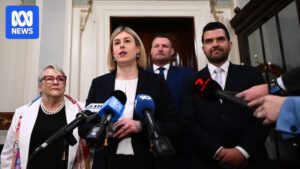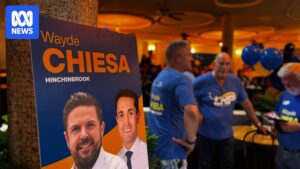
Most Australians don’t wake up eager to wrestle with their superannuation. They want to save, contribute, tick the box, and feel confident they’re doing the right thing. However, when they reach out for help, they expect a straightforward answer, not a prolonged wait and a brush-off.
This week, one of our members, Margy, hit a frustrating wall. After receiving a redundancy, she decided to put a lump sum into her superannuation. Eager to get the money out of her bank account and working for her retirement, she made the deposit and then called her fund to confirm how it should be recorded for tax purposes. Should it count as a non-concessional contribution, or could she claim it as a concessional one?
Margy knew she’d already paid income tax on the money this financial year, but she also had room left in her concessional cap. She needed a clear explanation of the best way to classify the contribution to avoid paying more tax than necessary. Instead, she got stuck in the system, waiting 130 minutes to speak with someone at one of Australia’s largest super funds.
The Complexity of Superannuation
When Margy finally reached a representative, she spent another half hour trying to explain her query. Initially, she was told to lodge a form, then advised that she might not need to. The staffer seemed unsure about the differences between concessional and non-concessional contributions and had to check.
Margy just needed guidance, delivered clearly and timely. Eventually, she was referred to the Australian Taxation Office (ATO) because “it’s a tax matter.” After another 30 minutes on hold, she was redirected back to her fund to verify if she had lodged the correct form.
At no point did anyone explain what concessional and non-concessional contributions are, or why the distinction mattered. This confusion is a common issue for many Australians. Superannuation can feel like a foreign language, full of jargon and rules that don’t make much sense unless you work in it daily.
The Shortage of Financial Advisers
Some might argue that financial advisers could have easily resolved Margy’s dilemma. However, the reality is bleak. At a recent industry event, the head of the Financial Advice Association Australia (FAAA) revealed alarming numbers.
The FAAA, the country’s largest professional advice body, now has just 10,799 financial advisers left. And there are only 1,158 students in the pipeline to replace them in a nation of 27 million people.
Most other advisers operating in the country aren’t members of the FAAA, meaning they’re not held to its professional standards. This situation is worrying, leaving many Australians without reliable advice as they approach retirement.
Exploring Digital Solutions
So, what happens to people like Margy? Those trying to save, plan ahead, and use the system as designed, but who can’t get help when needed? Some funds in Australia are exploring new ways to guide members like Margy, not by replacing humans with bots, but by blending the two.
If Margy had logged into a smarter digital system that could instantly recognize her personal contribution, explain in plain English what it meant, and offer a short video or chat option to walk her through the next step, she might have saved herself two hours on hold and a lot of unnecessary stress.
This approach could be the most realistic and scalable way forward for many Australians. Digital guidance done right in superannuation can provide advice in a more human, accessible way, offering clear direction at the moment it’s needed.
The Simple Answer Margy Needed
The maddening part of Margy’s experience? The answer to her question was straightforward. Because Margy had already paid marginal tax on her personal contribution (since it was after-tax income), she wanted to claim it as a concessional contribution. All she needed to do was lodge the Notice of Intent to Claim or Vary a Deduction for Personal Super Contributions form with her fund before submitting her tax return.
Once the fund received and acknowledged the form, it would have reclassified the contribution as concessional, taxed at 15 percent inside the fund instead of her marginal rate, which could be around 30 percent.
When she later claimed that deduction on her tax return, the ATO would have refunded or offset the difference, effectively giving her back the extra tax she’d already paid. It could have been as simple as one form, one step, and no confusion. Margy could have saved hundreds, possibly thousands, of dollars.
Yet, she waited more than two hours on hold, only to be told to call someone else. This scenario underscores the urgent need for a more efficient, user-friendly approach to superannuation guidance in Australia.
Bec Wilson is the author of the bestseller How to Have an Epic Retirement and the newly released Prime Time: 27 Lessons for the New Midlife. She writes a weekly newsletter at epicretirement.net and hosts the Prime Time podcast.
Advice given in this article is general in nature and is not intended to influence readers’ decisions about investing or financial products. They should always seek their own professional advice that considers their own personal circumstances before making financial decisions.






